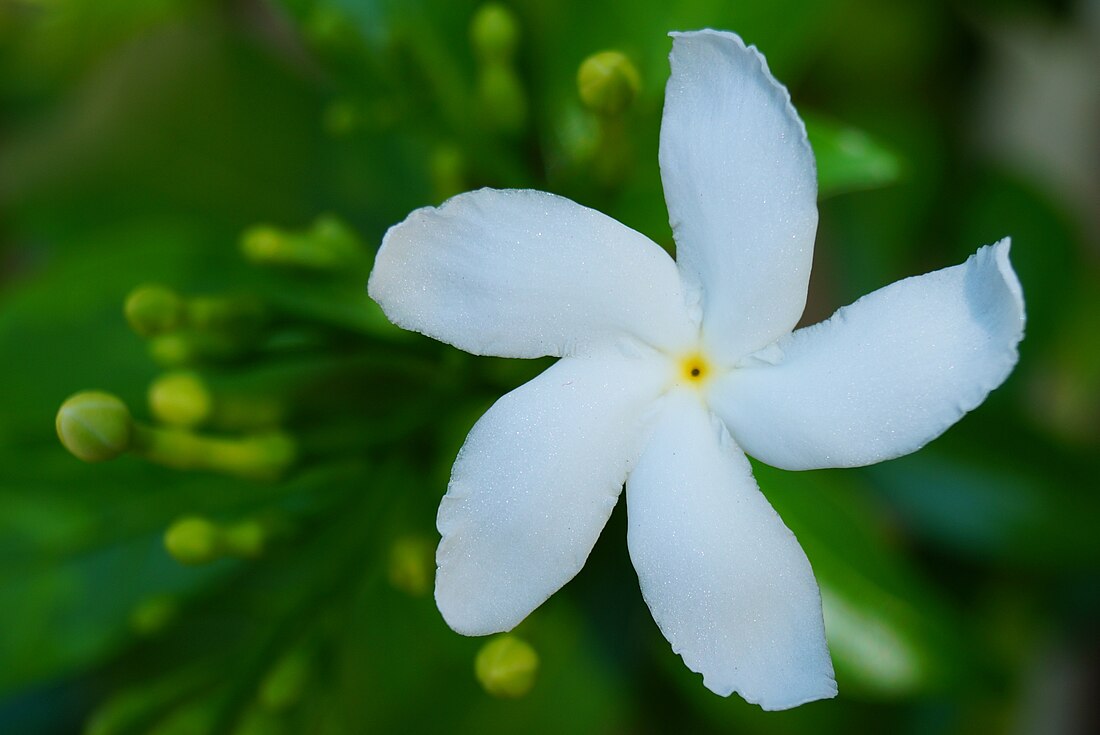Tabernaemontana divaricata
Species of plant From Wikipedia, the free encyclopedia
Tabernaemontana divaricata, commonly called pinwheel flower,[3] crape jasmine, East India rosebay, and Nero's crown,[4] is an evergreen shrub or small tree native to South Asia, Southeast Asia and China.[1] In zones where it is not hardy it is grown as a house/glasshouse plant for its attractive flowers and foliage. The stem exudes a milky latex when broken, whence comes the name milk flower

| Tabernaemontana divaricata | |
|---|---|
 | |
| Scientific classification | |
| Kingdom: | Plantae |
| Clade: | Tracheophytes |
| Clade: | Angiosperms |
| Clade: | Eudicots |
| Clade: | Asterids |
| Order: | Gentianales |
| Family: | Apocynaceae |
| Genus: | Tabernaemontana |
| Species: | T. divaricata |
| Binomial name | |
| Tabernaemontana divaricata R.Br. ex Roem. & Schult. | |
| Synonyms[2] | |
|
List
| |
Description
The plant generally grows to a height of 1.5–1.8 metres (5–6 ft) and is dichotomously branched. The large shiny leaves are deep green and about 15 cm (6 in) in length and 5 cm (2 in) in width. The waxy blossoms are found in small clusters on the stem tips. The (single) flowers have the characteristic 'pinwheel' shape also seen in other genera in the family Apocynaceae such as Vinca and Nerium. Both single and double-flowered forms are cultivated, the flowers of both forms being white. The plant blooms in spring but flowers appear sporadically all year. The flowers have a pleasing fragrance.[5] More than 66 alkaloids are found in the shrub.[6] Its habitats include montane brushwoods and sparse forests.[7]
- A pair of flowers
- Tabernaemontana divaricata 'Flore Pleno'
- Crape jasmine bunch
- Tabernaemontana divaricata 'Pinwheel'
- Tabernaemontana divarcata yet to blossom
- Caterpillar of Oleander hawk-moth feeding on pinwheel flower plant
- Flower buds of crape jasmine at night
Phytochemistry
The species is known to produce many alkaloids including catharanthine, conolidine, coronaridine, dregamine, ibogamine, tabersonine, voacangine, voacamine and voacristine.[8] Ibogaine may occur in multiple Tabernaemontana species.[8]
See also
References
External links
Wikiwand - on
Seamless Wikipedia browsing. On steroids.








